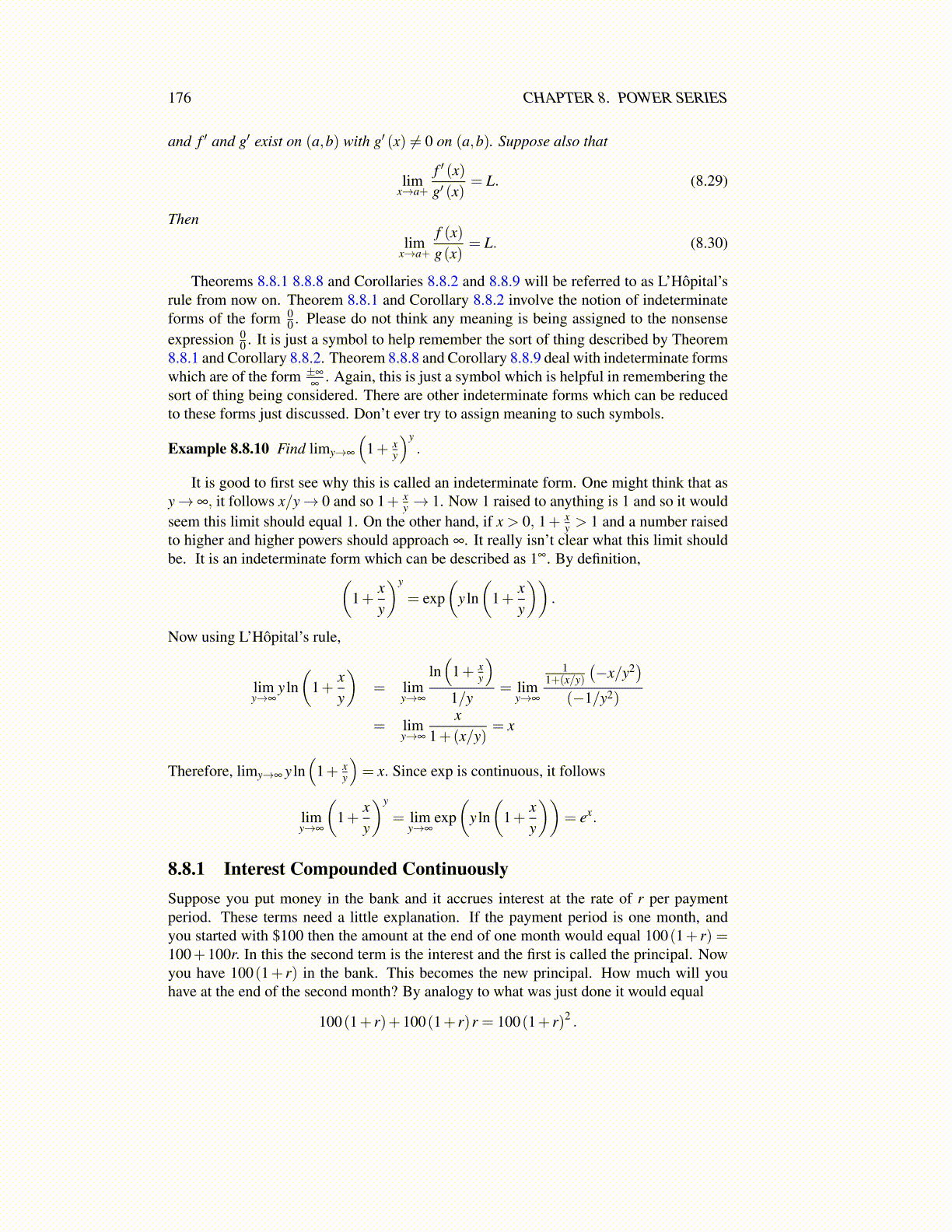
176 CHAPTER 8. POWER SERIES
(e) limx→∞
( 3x+25x−9
)1/x.
(f) limn→∞
(cos 2x√
n
)n.
(g) limn→∞
(cos 2x√
5n
)n.
(h) limx→3xx−27x−3 .
(i) limn→∞ cos(
π
√4n2+13n
n
).
(j) limx→∞
( 3√x3 +7x2
−√
x2−11x
).
(k) limx→∞
( 5√x5 +7x4
− 3√x3−11x2
).
(l) limx→∞
(5x2+72x2−11
) x1−x
.
(m) limx→∞
(5x2+72x2−11
) x lnx1−x
.
(n) limx→0+ln(
e2x2+7√
x)
sinh(√
x) .
(o) limx→0+7√x− 5√x9√x− 11√x
.
3. Find the following limits.
(a) limx→0+ (1+3x)cot2x
(b) limx→0sinx−x
x2 = 0
(c) limx→0sinx−x
x3
(d) limx→0tan(sinx)−sin(tanx)
x7
(e) limx→0tan(sin2x)−sin(tan2x)
x7
(f) limx→0sin(x2)−sin2(x)
x4
(g) limx→0e−(1/x2)
x
(h) limx→0( 1
x − cot(x))
(i) limx→0cos(sinx)−1
x2
(j) limx→∞
(x2(4x4 +7
)1/2−2x4)
(k) limx→0cos(x)−cos(4x)
tan(x2)
(l) limx→0arctan(3x)
x
(m) limx→∞
[(x9 +5x6
)1/3− x3]
(n) limx→0ln(sin(x)/x)
x2
4. Suppose you want to have $2000 saved at the end of 5 years. How much moneyshould you place into an account which pays 7% per year compounded continuously?
5. Using a good calculator, find e.06−(1+ .06
360
)360. Explain why this gives a measure
of the difference between compounding continuously and compounding daily.
6. Consider the following function 2
f (x) ={
e−1/x2for x ̸= 0
0 for x = 0
Show that f (k) (0) = 0 for all k so the power series of this function is of the form∑
∞k=0 0xk but the function is not identically equal to 0 on any interval containing 0.
Thus this function has all derivatives at 0 and at every other point, yet fails to becorrectly represented by its power series. This is an example of a smooth functionwhich is not analytic. It is smooth because all derivatives exist and are continuous.
2Surprisingly, this function is very important to those who use modern techniques to study differential equa-tions. One needs to consider test functions which have the property they have infinitely many derivatives butvanish outside of some interval. The theory of complex variables can be used to show there are no examples ofsuch functions if they have a valid power series expansion. It even becomes a little questionable whether suchstrange functions even exist at all. Nevertheless, they do, there are enough of them, and it is this very examplewhich is used to show this.